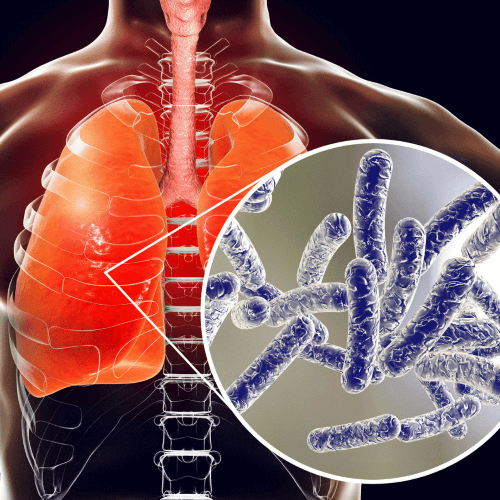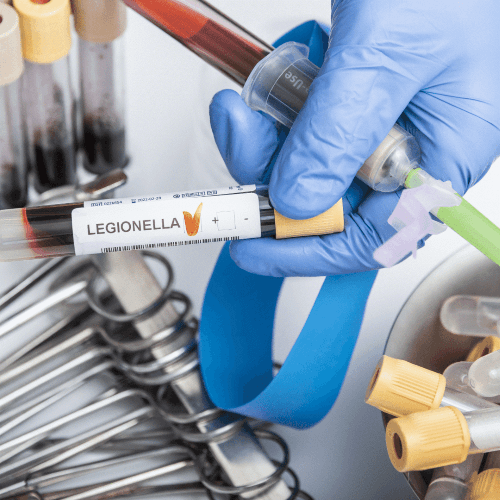Legionnaires’ disease is a type of atypical pneumonia, caused by the legionella bacterium. Legionnaires are most acquired by inhalation of germs from water or dirt. It is more common in the elderly, smokers, and persons with compromised immune systems. This blog will give brief insights of symptoms, causes, treatment and prevention of legionnaires disease.
What is the cause of Legionnaires’ disease?
Legionnaires’ illness is caused by Legionella bacteria, which belong to the genus Legionella. Although there are several Legionella species that can cause the disease, Legionella pneumophila is responsible for 85-90 percent of cases. Legionella species can be found in almost any freshwater or aquatic environment. They may survive for months in a damp environment and multiply when algae and organic debris are present.
What are the most common symptoms of legionnaires?
It takes 2 to 10 days for legionella to take hold after you’ve been exposed to it. At first, it can feel like the flu. You could have:
- Fatigue
- Headaches
- Chills
- Muscle pain
 You may have the following symptoms on the second or third day of your illness:
You may have the following symptoms on the second or third day of your illness:
- Cough
- Diarrhea
- Nausea and vomiting
- Trouble breathing
- Changes in your mental state
- Chest pain
Pontiac fever
Legionella bacteria causes Pontiac fever. It differs from Legionnaires in several ways:
- Pontiac fever is a mild flu-like sickness that isn’t nearly as serious as Legionnaires’ disease. It doesn’t induce lower respiratory symptoms like coughing.
- Its symptoms normally appear 24 to 72 hours after coming into contact with the bacteria.
- Pontiac fever will go away on its own without treatment in 3 to 5 days, depending on the severity of the symptoms. Legionnaires’ illness, on the other hand, can be fatal.
How does the Legionnaires infection spreads?
Inhaling microscopic water droplets containing legionella bacteria infects the majority of people. This could be water from a shower, faucet, or whirlpool, or water from a large building’s ventilation system. Eruptions have been connected to the following:
- Hot tubs and whirlpools
- Hot water tanks and heaters
- Swimming pools
- Birthing pools
- Decorative fountains
- Drinking water
Aside from inhaling water droplets, the infection can be spread in a variety of ways, including:
Aspiration:
This happens when liquids enter your lungs by mistake, commonly because of coughing or choking when drinking.
Soil:
After working in a garden or using contaminated potting soil, a few people have caught Legionnaires’ disease.
Diagnosis of Legionnaires’ disease
 Laboratory tests are required to identify Legionnaires’ disease from other kinds of pneumonia. As a result, if there is a chance of exposure to the Legionella bacteria, the doctor must be notified so that the necessary tests can be performed. Laboratory tests that isolate Legionella from respiratory secretions (sputum) or examine a patient’s blood or urine confirm the diagnosis. Your doctor may order one or more of these tests:
Laboratory tests are required to identify Legionnaires’ disease from other kinds of pneumonia. As a result, if there is a chance of exposure to the Legionella bacteria, the doctor must be notified so that the necessary tests can be performed. Laboratory tests that isolate Legionella from respiratory secretions (sputum) or examine a patient’s blood or urine confirm the diagnosis. Your doctor may order one or more of these tests:
- A urine tests
- Tests of material that you cough up from your lungs (sputum)
- A blood tests
- A chest X-ray
- A CT scan of your brain
- A test of your spinal fluid (spinal tap)
How can you prevent Legionnaires’ disease?
The most important strategy to avoid Legionnaires’ illness is to keep the water supply in good working order. Legionella bacteria cannot thrive or replicate in this environment. This means that water systems should be inspected and disinfected on a regular basis. Cleaning water features and fountains should be done on a regular basis.
Contact your healthcare practitioner right away if you think you’ve been exposed to the Legionella bacterium.
Nursing revalidation offers legionnaires awareness course. For effective care and better understanding of legionnaires disease and how you can help a legionnaires patient, join the course now.

